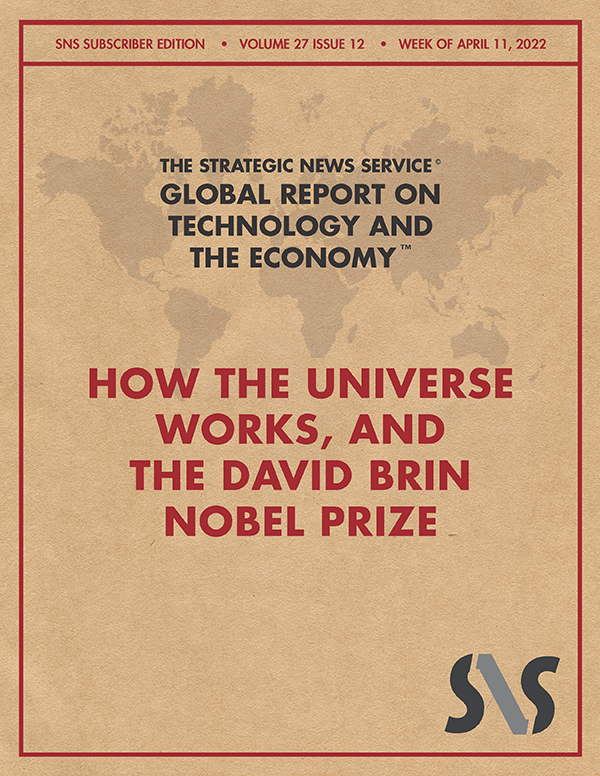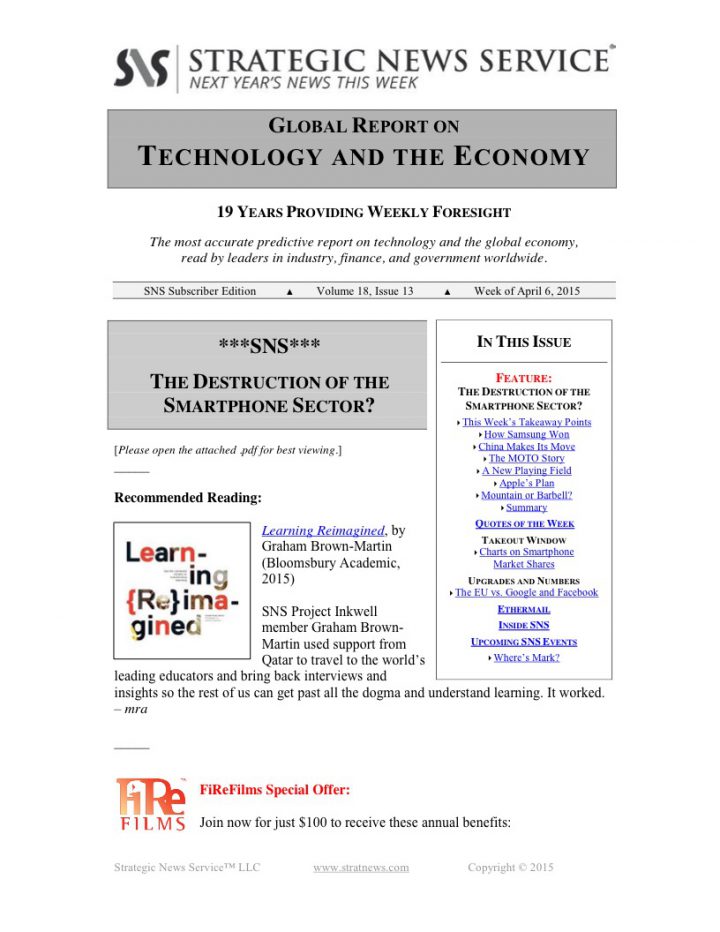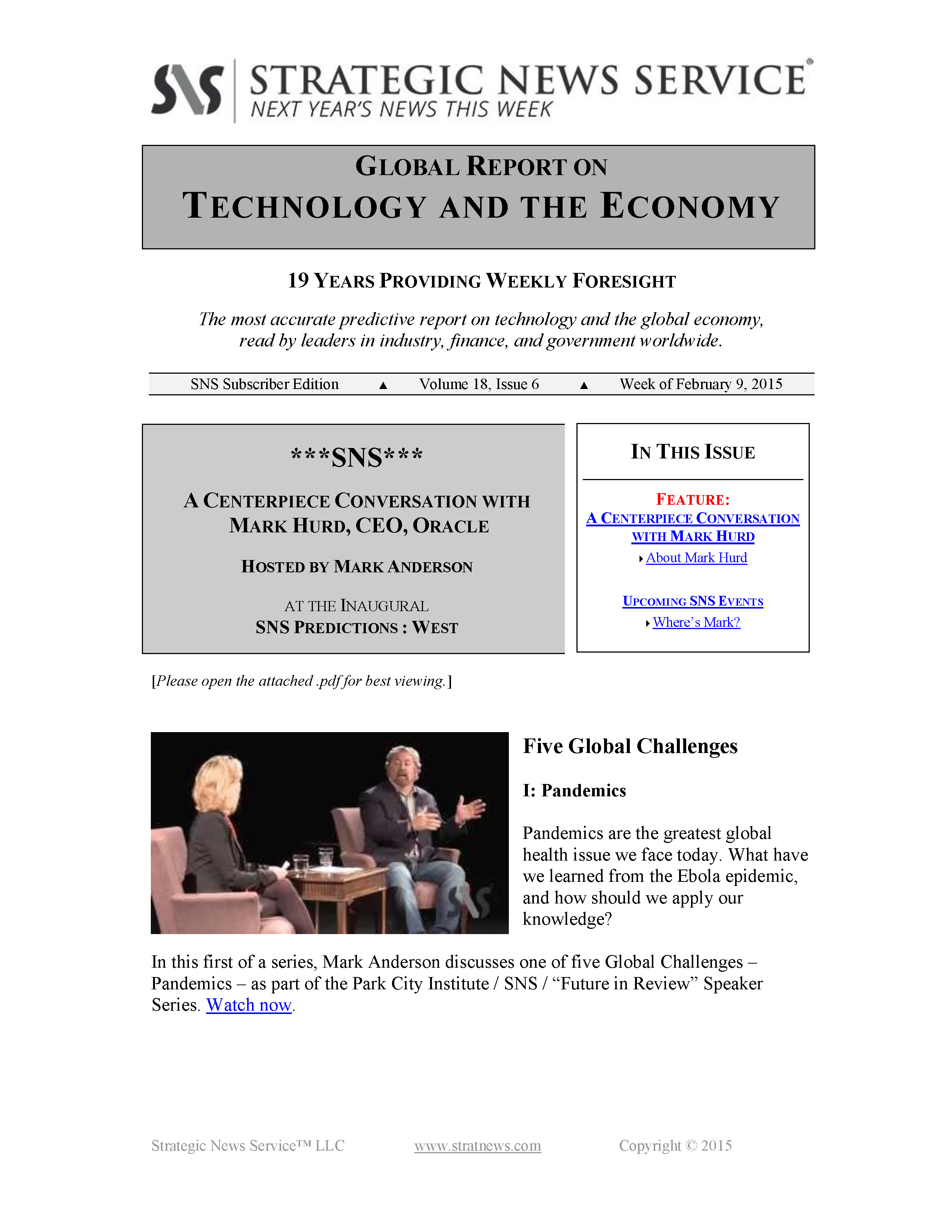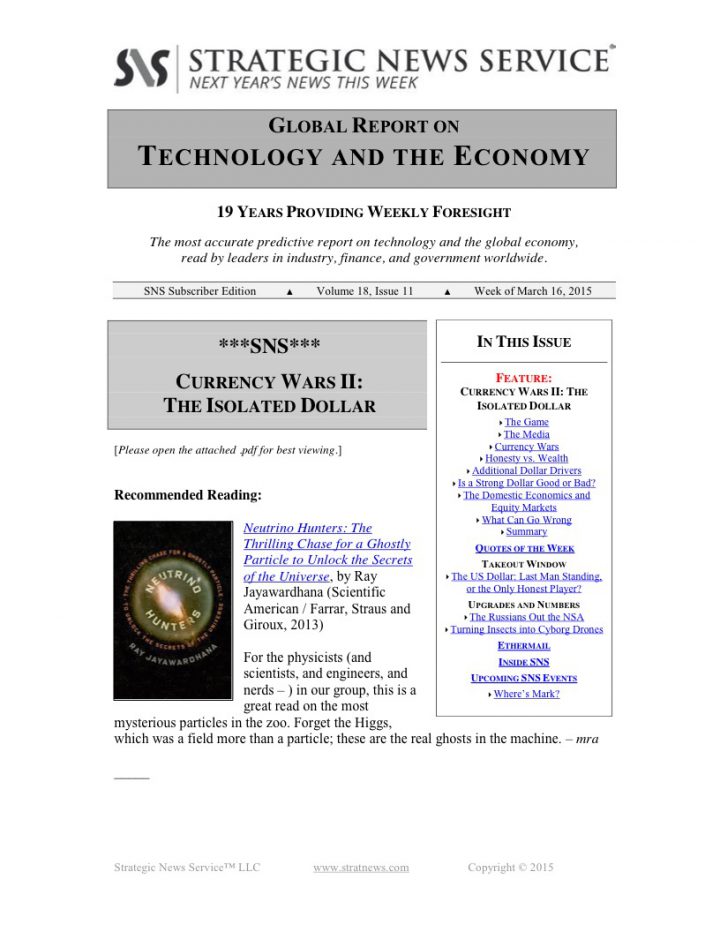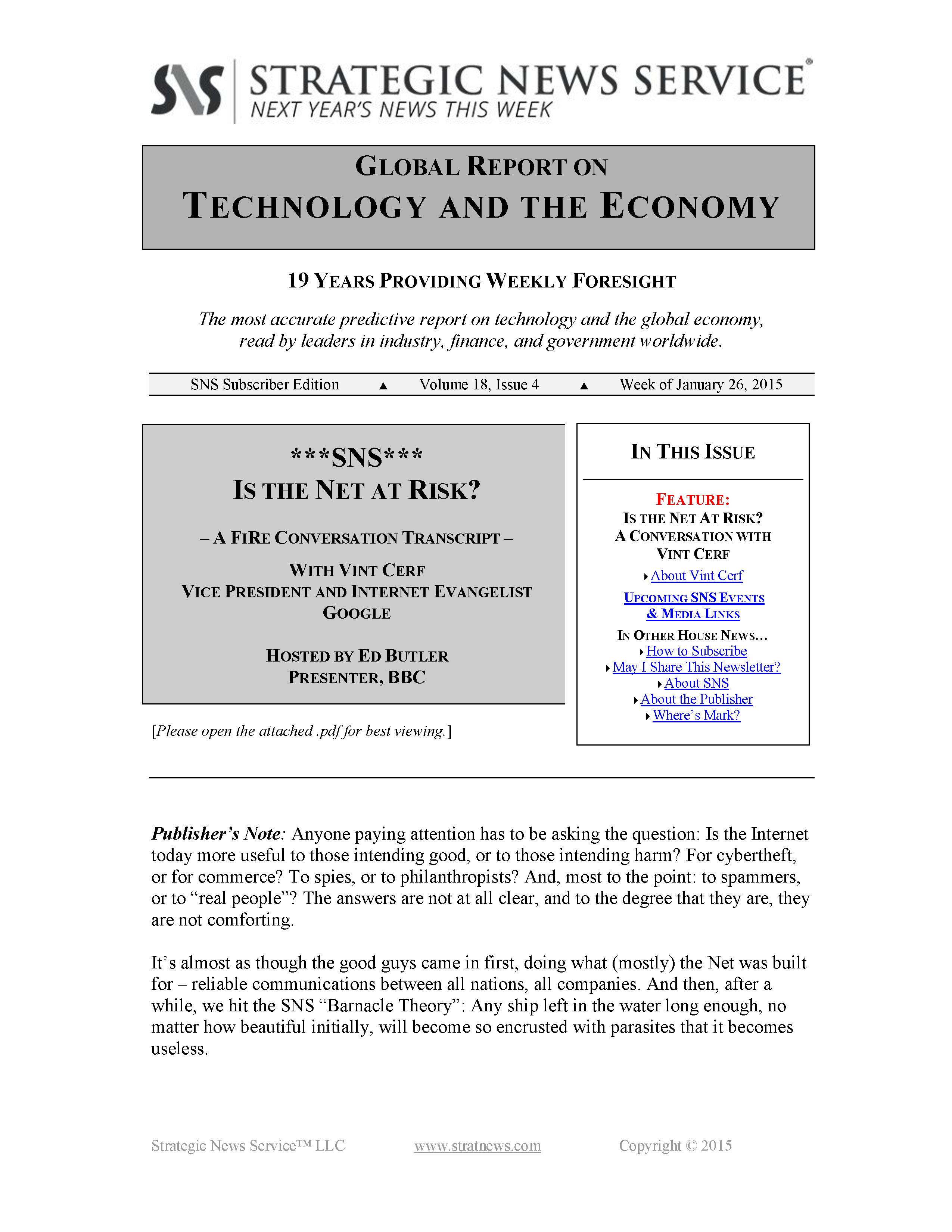In This Issue
Vol. 27 Issue 12
HOW THE UNIVERSE WORKS, AND THE DAVID BRIN NOBEL PRIZE
- SNS RESONANCE THEORY SERIES
MORE FROM SNS
UPGRADES I: Q&A
UPGRADES II: DAVID CORNELL LETTER
MEMBER SPOTLIGHT
ETHERMAIL
OUR PARTNERS
WHERE’S MARK?
—
The following is a transcript of “Redefining the Cosmos: The Resonance Approach,” a FiRe 2022 interview of Mark Anderson by scientist and science-fiction author David Brin. For those with net access, we strongly recommend viewing the video, available here.
David Brin: Hello, all; I’m David Brin. I’ve been with FiRe since almost the beginning, and I’m honored to be hosting a couple of interviews. First, in an hour we go to the sublime, my colleague Kim Stanley Robinson; but first, the opposite of sublime, in the best sense – not ridiculous, but in the sense of being so grounded and down-to-earth that he encompasses the whole cosmos: our host – my host and yours – Mark Anderson is going to be talking, forcing me to drag out and dust off my physics PhD. I can barely keep up with this guy.
In any event, we live in amazing times. Not long ago, the so-called “standard” model of physics had a triumph with the discovery of the Higgs Boson; and yet, there’s a sense of sullen disillusion spreading. String theory appears to have no application; there are disagreements over the Hubble constant; above all, there are these weird notions – dark matter and dark energy – folks try to detect them, and so far they’ve found no signs. So, some of us physicists have, in desperation, turned to folks with a little bit more agility, folks like – you know, you, Mark. So we’ll be addressing some of Mark’s predictions, in Resonance Theory. It’s been out there for a while and getting some respect. Since we’ll be addressing some of the predictions, Mark, can you frame Resonance Theory in a few sentences for the audience?
Mark Anderson: Very simple, David, and thank you for being here, as well.
The simplest way to say what Resonance Theory is all about is that it provides a new view of the physical world, in which space is not considered to be empty, but in fact, as physical properties, and that those properties lead directly to the laws of physics.
In other words, for a long time, as you’re aware, people thought space – well, back in Hubble’s day! – was empty, and we’re here to say, it’s not. You and I can talk more about that.
DB: Well, of course there’s a lot of talk about how most of what’s out there is not what we see. Long ago, in the ’30s, Fritz Zwicky saw that galaxies rotated much faster than they would have if just stars were doing all the gravitational tugging. So he, even back then, said there was something that was dark that was having gravitational effects, but we don’t know what it is, dark matter – and now, because of the Nobel Prize-winning observations of imputed expansion rates from the Big Bang, there’s also the assumption that the biggest component of everything is dark energy, which, according to Einstein, would cause accelerating instead of falling back in on itself – a sort of Big Crunch, which people used to think, the Big Bang is accelerating.
You have some strong opinions about what dark matter might be, and whether or not there’s dark energy at all.
MA: Well, actually, I believe there is both dark energy and dark matter. I think it’s not a mystery once you accept that space is not empty. Now, back when Fritz made his theory, he thought that space was empty, but he thought that there was this thing called “tired-light theory,” which he offered, and which – by the way, you may notice, the chief scientist at NASA, when he read my most recent paper on the cosmos and these questions you’ve just raised, suggested that maybe it was like the tired-light theory. So we went and looked pretty closely at that. And it’s like it in one way: both theories said that over distance, there would be energy subtracted from light, and therefore a red shift. But Fritz said it was because of scattering. And we’re not saying that. We’re saying it’s because of the actual energy absorption of space itself, not particles in space.
DB: And there are properties of space that have been known about for a long time: permittivity and all that. Would you like to mention how a vacuum … to one degree or another, physicists have always known that vacuums have properties.
MA: Right. Since the days of Faraday and Maxwell. It’s a bit ironic, actually. If you’re a historian in science, you know this already, but all the physicists knew there was something going on, because they knew that empty space had these physical characteristics – it had permittivity, it had permeability, electric and magnetic constants … This was well-known back in the 19th century.
And yet, when Einstein finally got his arms around stuff – you know, when he was between 16 and 22, let’s say – he got to the point where it was so toxic a subject that in his book with Leopold Infeld, he wrote the following sentence, which he later admitted was his greatest mistake. The sentence was: “Since we do not mathematically require the ether” – meaning, a substantial space – “we shall never again refer to it.” And by doing that, he shut the door, I believe, on his own greatest dream, of unifying the worlds of quantum and general relativity, which he spent the rest of his life, as you know, trying to do.
We published a paper, which SNS members saw, called “Einstein’s Greatest Mistake,” at a time when I didn’t know what I’m telling you now. It was only when Walter Isaacson, who was writing the definitive biography of Einstein – I had sent this to him, and he brought it back to me — he said, “Did you know that Einstein agreed with you in your naming this his greatest mistake, in a speech at the University of Leyden in 1921?” So, even Einstein, later on in his life, agreed that this was, in fact, his greatest mistake. Saying that space was not ether, was not substantial, was his biggest mistake.
DB: Yes, it’s very commonly said that he regretted most abandoning the cosmological constant –
MA: Right!
DB: But that is actually a misstatement of his second greatest mistake.
MA: Yes. That’s right. He doubted himself about the numeric value, changed it, and then I believe changed it back again – and if you asked a physics grad student today, that’s what that student would say he thought was his greatest mistake. But you and I are in agreement here. That wasn’t it.
DB: Yeah. Well, just so people can know the background: in the 1890s, there was a Michelson and Morley experiment which seemed to devastate the notion of a vacuum having an ether that was a physical thing that would affect the speed of light. Because the speed of light is affected by passing through physical gases and things like that. It was then suddenly politically correct to say that the ether did not exist at all, despite the fact, as Mark and I agree, that space has these properties. And of course, the lack of ether in that sense led to special relativity verified, and all that. But there are so many different ways you could have an ether that don’t violate Michelson and Morley.
MA: There you go.
DB: Would you like to talk a little more about that?
SKU: SNS-2022-04-14 - Need Help? Contact Us Leave Feedback
Categories: 2022 Issues, Back Issues
Tags: Free, PDF Download

